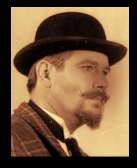- Messages
- 15,259
- Location
- Arlington, Virginia
Well I'll be. Thanks for the info, man. Great answer!Because we were first. When Edison came up with a practical light bulb he didn't have the materials to make a filament to stand higher voltage. By the time that advancement happened 120 volt was the standard. It was also thought to be safer to use than 240 volts. Europe and a lot of the rest of the world was farther behind in widespread electrical distribution so they were able to take advantage of the lower distribution cost of higher voltage.



